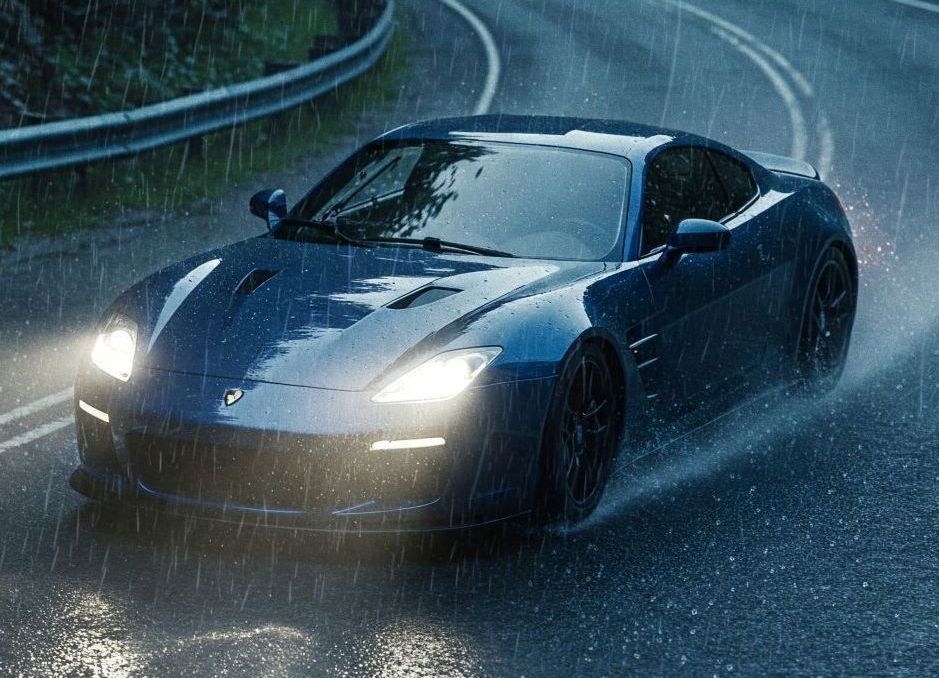Blog Layout
Mastering the Art of Homemade Pizza: Recipes and Tips
Doug Stockman • June 7, 2024
Pizza is more than just a meal—it's an experience. Whether you're a seasoned home chef or a beginner in the kitchen, crafting your own pizza can be incredibly rewarding. Today, we'll explore three delicious pizza recipes that cater to different tastes and skill levels. So, grab your apron and let's dive into the world of homemade pizza!
Neapolitan Margherita Pizza
Level:
Intermediate
Total Time:
25 minutes
Yield:
One 10-inch pizza; serves 2 to 4
Ingredients:
- One 28-ounce can whole peeled tomatoes, preferably San Marzano, drained
- Sea salt
- "00" or all-purpose flour, for forming and cooking
- 9 ounces pizza dough, at room temperature (store-bought or homemade)
- 2 ounces fresh mozzarella, torn into strips
- 2 large fresh basil leaves
Directions:
- Preheat Your Oven: Place a pizza stone on the lower rack, remove the other racks, and preheat the oven to 500°F.
- Prepare the Tomato Sauce: Grind the tomatoes using a food mill or pulse in a food processor until coarsely pureed. Season with sea salt and set aside.
- Form the Dough: Lightly dust a work surface with flour. Flatten the dough using your fingertips, flipping and pressing until it stretches into a 10-inch circle.
- Assemble the Pizza: Spread about 1/4 cup of the tomato sauce over the dough, leaving a 1/2-inch border. Scatter the mozzarella strips and tear the basil leaves over the top.
- Transfer to the Oven: Lightly flour a pizza peel, then slide the pizza onto the peel. Transfer the pizza onto the hot stone and bake until the crust is charred and the cheese is bubbly, about 8 to 10 minutes.
- Serve: Remove the pizza with the peel, slice, and serve immediately.
Stuffed Pizza Crust
Level:
Easy
Total Time:
1 hour 20 minutes
Yield:
6 servings
Ingredients:
- One 1-pound loaf store-bought frozen bread dough, thawed and risen
- All-purpose flour, for dusting
- 2 teaspoons olive oil
- Large pinch of kosher salt
- Arrabbiata Sauce (recipe follows), cooled
- 2 tablespoons grated Parmesan
- 1/4 cup shredded mozzarella
- 14 slices pepperoni, chopped
- 10 pieces string cheese, each cut in half
- 1 egg, whisked with 1 teaspoon water
- 4 Roma tomatoes, sliced
- Fresh basil leaves
Directions:
- Preheat the Oven: To 475°F.
- Prepare the Dough: Roll and stretch the dough into a 31-inch rope, then flatten it into a 3-inch wide rectangle. Brush with olive oil and sprinkle with salt.
- Add Fillings: Spread a thin layer of Arrabbiata Sauce, then sprinkle with Parmesan, mozzarella, and pepperoni. Arrange string cheese pieces in a double line.
- Form the Crust: Fold the dough over the cheese and pinch the edges together to seal. Shape into a circle and place seam-side down on an oiled baking sheet.
- Bake the Pizza: Brush the surface with egg wash and bake until golden brown, about 15 minutes. Let rest for 10 minutes before slicing.
- Garnish: Arrange tomato slices and basil leaves in the center and serve with remaining Arrabbiata Sauce for dipping.
Arrabbiata Sauce:
- 2 tablespoons olive oil
- 1 tablespoon crushed red pepper flakes
- 1 small onion, chopped
- 4 cloves garlic, minced
- 1/2 cup white wine
- Two 15-ounce cans crushed tomatoes
- 1 tablespoon Italian seasoning
- Pinch of sugar
- Kosher salt
Cook the Sauce:
Heat oil in a pan over medium-high heat, add red pepper flakes and onions, cook until softened. Add garlic and cook briefly. Deglaze with white wine, reduce by half, then add tomatoes, Italian seasoning, sugar, and salt. Simmer for 30 minutes.
Barbecue Chicken Pan Pizza
Level:
Easy
Total Time:
30 minutes
Yield:
2 to 4 servings
Ingredients:
- 1 rotisserie chicken
- EVOO or vegetable oil
- 1 red onion
- 3 to 4 cloves garlic
- Salt and pepper
- 1/2 cup chicken stock
- 1 cup ketchup
- 1/4 cup light brown sugar
- 1/4 cup molasses
- 1/4 cup cider vinegar
- 1/4 cup Worcestershire sauce
- 1 tablespoon smoked sweet paprika
- 1 tablespoon ground mustard
- 1 pound pizza dough
- 1 cup shredded mozzarella cheese
- 1 cup shredded cheddar cheese
- 2 tablespoons hot sauce
- Cilantro leaves
- Sliced scallions
- Sliced fresh jalapeno peppers
Directions:
- Preheat the Oven: To 525-550°F.
- Prepare the Chicken: Remove skin and bones, shred the meat.
- Cook the Sauce: Heat oil in a skillet, add onions and garlic, season with salt and pepper. Add stock, ketchup, sugar, molasses, vinegar, Worcestershire sauce, paprika, and mustard. Add chicken, coat in sauce, then remove from heat.
- Prepare the Dough: Roll and stretch the dough to fit a preheated 12-inch cast-iron skillet. Sprinkle with cornmeal, press dough into the skillet, brush with oil, and season.
- Assemble the Pizza: Top with chicken and sauce, then cheeses. Bake until golden and bubbly, about 10-12 minutes.
- Garnish: Drizzle with hot sauce, and top with cilantro, scallions, and jalapenos.
Homemade pizza is not only delicious but also a fantastic way to bring family and friends together. Whether you're creating a classic Margherita, a stuffed crust delight, or a BBQ chicken masterpiece, these recipes will guide you to pizza perfection. Enjoy the process and the mouthwatering results!
For more delicious pizza recipes, check out Food Network's Top Pizza Recipes.

By Doug Stockman
•
February 10, 2025
Top 10 Insurance Myths Busted (by Yours Truly, Your Local Insurance Agent) Hey folks! Ready to debunk some myths that are floating around out there like rogue shopping carts in a hurricane. I hear it all the time – whispers in the grocery store, hushed tones at the PTA meeting. "Did you know…?" Nine times out of ten, "Did you know…?" is followed by something wildly inaccurate about insurance. So, let's grab our myth-busting ray guns and get to work! 1. Red Cars = Higher Insurance Rates: Seriously? Do you think insurance companies employ colorblind squirrels to set rates? The color of your car has absolutely nothing to do with your premiums. It's all about your driving record, the type of car (sports car vs. sensible sedan), and where you live. So, go ahead, rock that cherry red convertible. Just drive safely, okay? 2. "Full Coverage" Means I'm Covered for EVERYTHING: Ah, "full coverage." It's a catchy phrase, isn't it? But it's also a bit of a misnomer. "Full coverage" usually refers to a combination of liability, collision, and comprehensive coverage. It doesn't mean you're covered if your pet hamster spontaneously combusts in your car (yes, I've heard it all). Read your policy, people! Know what you're actually paying for. 3. My Home Insurance Covers EVERYTHING in My Home: See Myth #2 but replace "car" with "home." Your standard homeowner's policy is great for things like fire, theft, and some weather-related damage. But it probably won't cover your prized collection of antique thimbles if they're damaged by a rogue poltergeist. (Again, I've heard it all.) There are specific riders and endorsements for certain valuables, so chat with your agent. 4. Filing a Claim Will Automatically Jack Up My Rates: Not necessarily. One small claim might not affect your rates too much. It's the frequency of claims that raises red flags. Think of it like this: one fender bender is a "whoops," three fender benders are a "pattern." Insurance companies don't like patterns. 5. Renters Don't Need Insurance: Oh, renters, renters, renters. This one makes me cringe. Just because you don't own the building doesn't mean you don't own stuff. Your landlord's insurance covers the structure, but it doesn't cover your personal belongings. A good renter's policy is surprisingly affordable and can save you from financial ruin if your apartment catches fire, gets burgled, or, you know, invaded by those thimble-loving poltergeists. 6. Older Homes Are Always More Expensive to Insure: Not always! Sure, some older homes might have outdated wiring or plumbing, but many have been renovated and are perfectly safe. Insurance companies look at the condition of the home, not just its age. 7. I Don't Need Flood Insurance - I Don't Live Near Water: Newsflash: floods can happen anywhere. Even if you live miles from the coast, heavy rain can cause flash flooding. Standard homeowner's insurance doesn't cover flood damage. You'll need a separate flood insurance policy. 8. My Credit Score Doesn't Affect My Insurance Rates: Wrong! In most states, insurance companies use credit-based insurance scores to help predict the likelihood of you filing a claim. So, keep those credit scores high, folks! 9. If I Total My Car, I'll Get What I Paid For It: Nope. You'll get the current market value of your car, which might be less than what you paid for it, especially if it's been owned a few years. Also, if your loan amount is more than the value of your car this is where "gap insurance" comes in. It covers the difference between what you owe on your loan and what the insurance company pays out. 10. Insurance Agents Are All Sleazy and Just Want Your Money: Okay, okay, some of us might be a little… enthusiastic. But most of us genuinely care about protecting our clients. We want you to have the right coverage at the right price. So, don't be afraid to ask questions. That's what we're here for! So, there you have it – ten insurance myths, thoroughly busted. Now go forth and be informed! And as always, if you have any questions, give your friendly neighborhood insurance agent a call. (That's me!)

By Doug Stockman
•
February 6, 2025
10 Safety Tips for Driving in the Rain (Because Hydroplaning is So Last Season) Alright, listen up, lead foots and Sunday drivers alike. It's raining. Again. And unless you've recently sprouted gills or your car is amphibious (in which case, please send pics), you're gonna have to navigate this liquid apocalypse like the rest of us mere mortals. So, ditch the daydreaming about that tropical vacation and pay attention, because hydroplaning isn't a personality trait, and ending up in a ditch is a terrible way to spend a Tuesday. Remember, safe driving keeps you from injury and doesn't give your insurance rates another reason to go up. 1. Slow Your Roll (Like, Seriously, Chill): This isn't a Fast & Furious movie, Vin Diesel isn't waiting for you at the finish line, and your pizza will still be lukewarm even if you arrive five minutes later (tip: even warmer if you turned on your heated seats). The faster you go, the more likely you are to become intimately acquainted with a guardrail. Think of it this way: slow and steady wins the race... and avoids the tow truck. 2. Lights On (Even if it's Not "Dark"): Yes, Captain Obvious, it's the law. But beyond that, it makes you less likely to be mistaken for a rogue wave by other drivers. Plus, it gives you that cool, mysterious vibe. You know, the kind that says, "I'm a responsible adult who also happens to be an awe-inspiring driver." 3. Check Your Tires (Are They Bald? You're Gonna Have a Bad Time): Think of your tires as the shoes of your car. Would you wear flip-flops to climb Mount Everest? No. (Unless you're insane. And also, please send pics.) Check your tread depth. If your tires are balder than a cue ball, you're basically driving on ice, even if it's 70 degrees out. 4. Double the Following Distance (Seriously, Double It): Tailgating is a bad idea on a sunny day. In the rain? It's a recipe for disaster. Give the car in front of you enough space so you have time to react if they suddenly decide to audition for "America's Next Top Emergency Brake." 5. Avoid Cruise Control (Unless You Want to Lose Control): Cruise control is great for long, straight highways. Rainy, slippery roads? Not so much. You want to be in full control of your vehicle, not letting some robot make decisions for you when things get dicey. 6. Brake Gently (Don't Slam On the Brakes Like You're Trying to Stop a Runaway Train): Slamming on the brakes in the rain is a surefire way to initiate a spin cycle that would make your washing machine jealous. Apply the brakes smoothly and gradually. Think of it as a delicate dance with your car, not a wrestling match. 7. Steer Smoothly (No Jerking Allowed): Just like braking, steering should be a gentle art. Jerky movements are more likely to cause your car to lose traction and send you sliding sideways. Imagine you're carrying a tray of hot coffee. Smooth and steady wins the day (and prevents third-degree burns). 8. Be Wary of Puddles (They Could Be Deeper Than You Think): Puddles can hide all sorts of dangers: potholes and debris. Avoid them if you can. If you can't, drive through them slowly and steadily. And for the love of all that is holy, don't try to splash pedestrians. Karma is a real thing. 9. Visibility is Key (Wipers On, Fog Lights If Needed): Make sure your wipers are in good working order. If they're streaking or squeaking, replace them. They're cheap, and they make a world of difference. Most auto parts stores will install them free of charge if purchased in their store. And if visibility is really bad, use your fog lights (but remember to turn them off when the fog clears, or you'll blind oncoming drivers). 10. Stay Calm (Panic is Your Enemy): If you do start to hydroplane, don't panic. Take your foot off the gas, steer gently in the direction you want to go, and avoid slamming on the brakes. Remember, smooth and steady. Think of it as a test of your driving skills. You got this. (Probably.) So, there you have it. Ten tips to help you survive the next downpour. Now go forth and conquer the roads, my friends. And try not to wreck.

By Doug Stockman
•
February 5, 2025
Gap Insurance: Because Life Gives You Lemons (and Your Car Gets Totaled) Life throws curveballs. Sometimes those curveballs involve deer, rogue shopping carts, and the dreaded "your vehicle is totaled" verdict from your insurance company. And while your insurance might cover the cost of your car... well, let's just say it might not be enough to cover your loan debt (or that Hawaiian vacation you were planning). Enter: Gap Insurance, the mysterious force field that promises to save you from financial ruin (or at least a serious case of ramen noodles). Think of it this way: You buy a brand-new car. You're cruising down the highway, top down, singing along to your favorite tunes. Life is good. Then BAM! Disaster strikes. Your car is totaled. Your insurance company cuts you a check... but it's not enough to cover the car loan. You're still on the hook for a hefty chunk of change, leaving you feeling more "gaping hole in my wallet" than "gap year in Europe." Gap Insurance is basically your financial superhero. It swoops in, cape flowing, to cover the difference between what your insurance pays out and what you still owe on your loan. It's like having a secret weapon against the cruelties of car ownership. But is it worth the extra cash? That, my friend, is the million-dollar question. Pros: Peace of Mind (Kinda): Knowing you're covered if disaster strikes can offer a fleeting sense of tranquility. Avoid Ramen Noodle Ramen: Let's be honest, nobody wants to live on ramen noodles for the next five years. Flex on Your Friends: "Oh, my car got totaled? No biggie, I have Gap Insurance." (Okay, maybe don't actually flex on your friends.) Cons: It Costs Money: And let's be real, money doesn't grow on trees (unless you live in a magical forest, in which case, please share your location). Might Be a Waste of Cash: If you make a significant down payment and have a shorter loan term, you might be perfectly fine without it. Fine Print Nightmare: Deciphering the fine print can feel like trying to solve a Rubik's Cube while blindfolded. The Verdict? Ultimately, the decision to get Gap Insurance is a personal one. If the thought of being "underwater" on your car loan gives you night terrors, then it might be worth the extra cost. Many insurance companies offer Gap Insurance for a fraction of the cost at the dealership or bank. And remember, even with Gap Insurance, always drive defensively. Because let's face it, life is unpredictable, and sometimes, the only way to survive is with a healthy dose of sarcasm and a really good insurance plan. Disclaimer: This blog post is for entertainment purposes only and should not be considered financial advice. Consult with a qualified financial advisor for personalized guidance. P.S. If your car does get totaled, take solace in the fact that you now have an excellent excuse to buy that electric scooter you've always wanted.
© 2025
All Rights Reserved | Privacy Policy | Terms of Use
